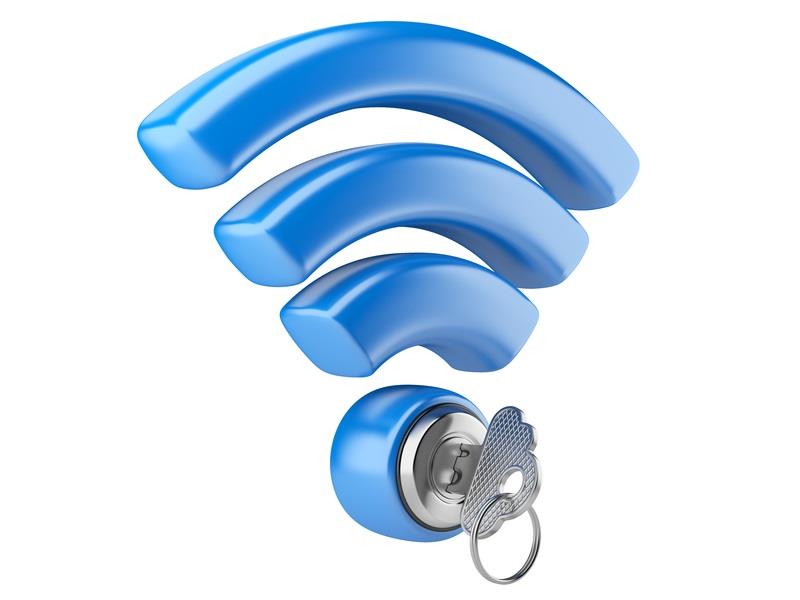
Today, nearly everyone has a wireless router. It is important that the wireless router be secure, as this can help prevent hackers from entering your network.
Have you ever driven around and been notified of new networks on your Smartphone? These networks are unsecure and up for grabs. The average person understands that hacking into a network and downloading data is wrong, but thieves are far from average. Once connected to a Wi-Fi system, thieves can potentially view all your information and files, and even gain access to important passwords.
Additionally, hackers can get into networks and commit crimes, which means the police will show up on your doorstep. A search warrant for a home or business can include seizing computers and other important property. Forgo these inconveniences by putting a lock on your wireless network with a strong password.
Locking Down Your Network
If you are a Home Telecom MyWiFi customer we have done the hard part for you and made sure that your wireless network is secure. If you have your own wireless router, there are several different steps you will need to take to lock down your wireless network. First, log in to your router’s administrative settings.
IP Settings
Windows PC users can find their IP settings by following one of the three methods below, depending upon what version of Windows they are running.
- General - Select “Run” from the “Start” menu. Then type “cmd” and press, “enter.” At the command prompt, type “ipconfig” and press, “enter.”
- Windows 8.1 – Select the “Start” button and then type “View network connections,” selecting it from the list.
- Windows 7 – Select the “Start” button, select “Control Panel,” enter “adapter” in the search box. Under “Network and Sharing Center,” select “View network connections.”
IP addresses should appear next to IPv4 Address. This may vary depending upon the version of Windows you are using.
Mac users can open “System Preferences” and click “Network.” Select “Wi-Fi” and then “Advanced.” Select the “TCP/IP” tab and look up the IPv4 Address.
Change Passwords
Change default wireless network router settings. Avoid using simple passwords, such as “admin” or those that include names. Your goal should be a password that is impossible for a hacker to guess. Combine a string of numbers, letters and symbols to create a unique password. Change both the Wi-Fi and router administrator passwords. Remember to change the network associated with web access.
Change SSID
Every wireless network has a name, which is a Service Set ID (SSID). Change your SID to something unique. Avoid using the assigned “linksys,” as this is an indicator to thieves that networks lack any passwords or encryption. You do not need to disable SSID broadcasting, as any hacker that has a wireless spectrum scanner can still find it.
Enable WPA2 Encryption
WPA2 is one of the newest – and most secure – forms of wireless encryption available. Always use this option when possible.
Enable MAC Filtering
Every device that has internet access has a Media Access Control, known as a MAC address. This unique identifier contains six pairs of alphanumeric characters. If you want to limit your network to only accept specific devices, turn on MAC filtering.
Limit DHCP Leases
Networks can manage the number of devices that can connect to Wi-Fi via the Dynamic Host Configuration Protocol (DHCP).
Calculate the number of devices that access the network with an additional one for guest access. Find the DHCP (or DNS) setting in the router’s administrative console and update the number of client leases available. Remember to reset the router to have the changes take effect.
Block WAN Requests
To conceal your network from other internet users, enable the “Block Wan Requests.” Once enabled, the router will not respond to unknown IP requests.
Are Guest Networks Secure?
A common question many people and businesses ask is if guest networks are secure. While a guest mode offers a separate Wi-Fi network to guests, it is often insecure. Some routers offer more secure guest networks, so it’s best to research home router security before purchasing a certain brand or model.
The guest mode does prevent guests from accessing sensitive data, such as network files. Guests are only given access to the internet. Most guest networks are open, which means that they do not offer secure Wi-Fi encryption.
These types of modes often require an additional password to gain internet access. A great example of this is in hotels and hospitals, which require a password, even though they provide a guest network.
Once you have secured your network, take it one step further by locking it down and disabling remote administration privileges. This will require that additional changes be done through a PC that is plugged directly into the wireless router.
As a further precaution, update passwords every six months.
If you require any assistance setting up your personal router, refer to the manual or type the model number of the router into an online search engine.
If you would rather us take the reins, Home Telecom offers our own managed WiFi solution called MyWiFi for only $5.95 per month.
